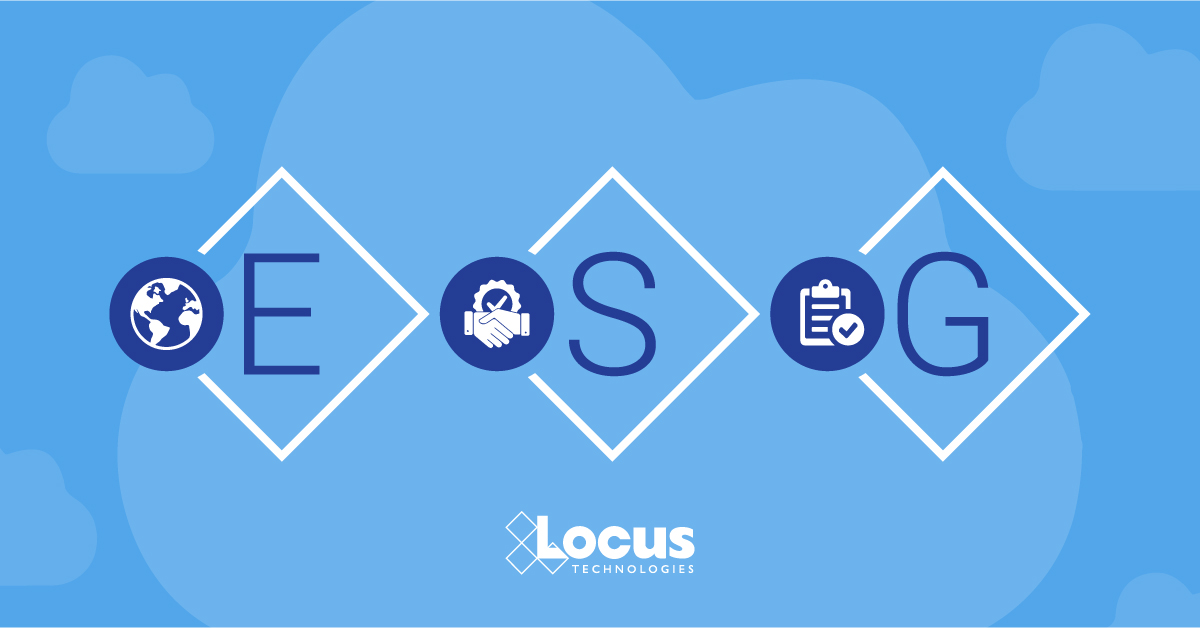ESG Software
ESG Reporting has Become a Business Requirement
In today’s world, organizations must measure and report their environmental performance and adherence to corporate social responsibility (CSR) and environmental, social, and governance (ESG) principles. Stakeholders, including regulators, investors, customers, rating agencies, research analysts, NGOs, and the public, are all starting to evaluate non-financial criteria in addition to companies’ financial health and performance. Companies also must comply with EHS regulations in the jurisdictions in which they operate. While most environmental regulations have been around for half a century, the gathering and reporting of sustainability, CSR, and ESG data is relatively new and is becoming an essential part of corporate annual reports.
Companies are increasingly discovering that data-driven ESG reporting has gone from a “nice to have” to a business requirement. But it’s challenging to keep up with such reporting when a company’s data is in spreadsheets or numerous unconnected silo applications. Companies suffer when their domain experts and others rely on manual and outdated processes to accomplish ever-increasing reporting requirements.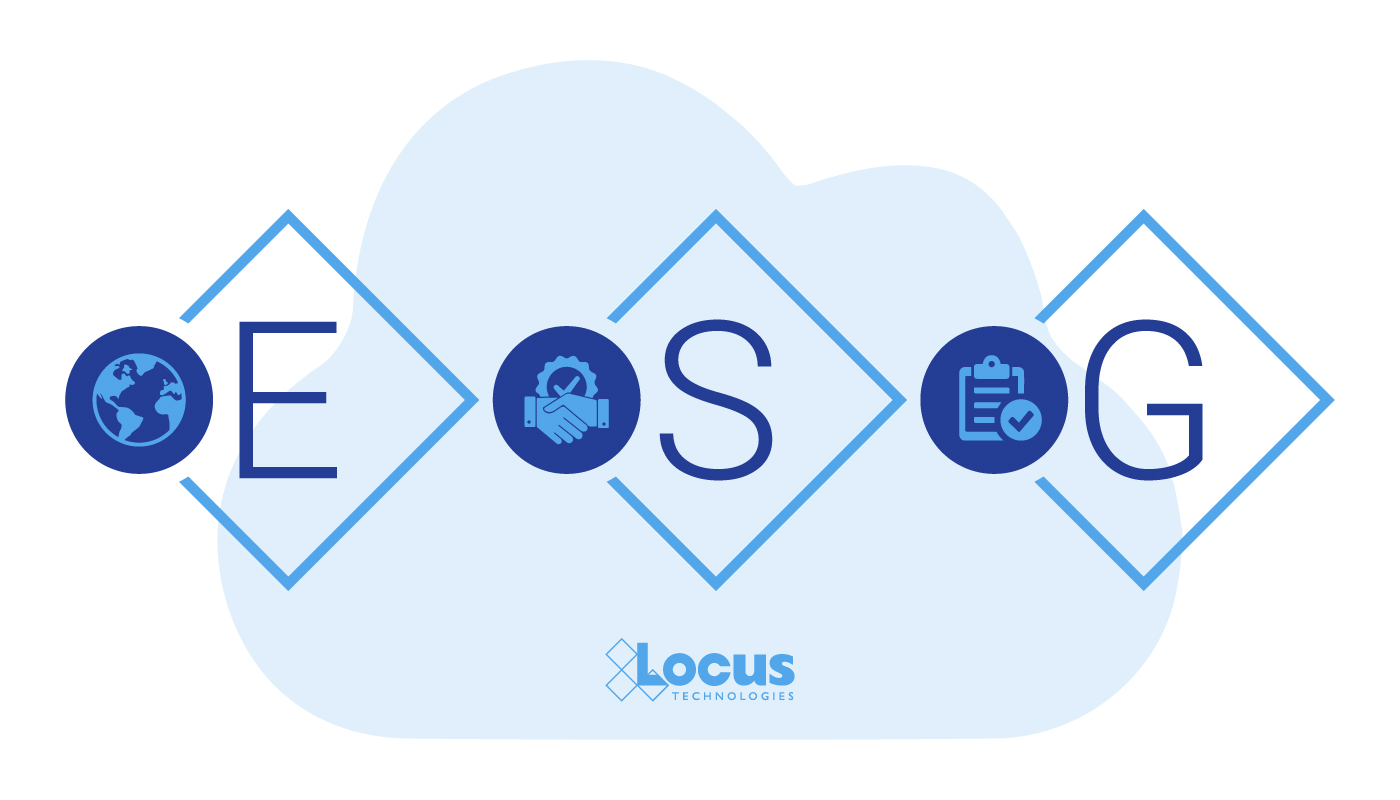
It appears imminent that the U.S. Securities and Exchange Commission (SEC) will in near future regulate ESG disclosure as a requirement by using some kind of universal reporting framework.
Wouldn’t it be nice to have a single enterprise and cloud-based software system to perform all EHS, ESG, and CSR reporting from a single software platform? That is what this article is about.
Sustainability vs ESG
Until recently, it was common to refer to sustainability and ESG interchangeably. But over time, their meanings have grown apart. Sustainability can mean many different things, depending on the discussion context, whereas ESG has become the preferred term for capital markets and has frequently appeared in the headlines. The transition from sustainability to ESG performance indicates a maturation of business practices leading to more precise measurements of a company’s performance, its impact on the environment, and the risk it carries for investors when there is a low environmental performance or spotty compliance with EHS regulations. As a result, companies need to improve the way they collect and track metrics for ESG reporting.
Holistic Approach
To compare companies relative to their impacts on the planet’s climate or well-being, one must take a holistic approach that includes many factors. Among those to consider when assigning a score to a company are:
- The magnitude and quality of its overall and coupled emissions to natural media
- The efficiency of its operations in water and energy usage
- Carbon footprint
- Recycling, waste management, treatment, and disposal operations
- The transparency and impacts of its supply chains
This holistic approach requires new, integrated, and interactive software tools. Such software, equivalent to the ERP (Enterprise Resource Planning) software that made its appearance in the early nineties, should provide complex tracking of all kinds of emissions linked to company-owned assets and services in real-time (Scope 1 emissions). It should also include emissions attributable to its supply chain, known as Scope 2 and Scope 3 emissions. Old ERP software applications integrate the processes needed to run a company in a single system: planning, purchasing inventory, sales, marketing, finance, and human resources. However, they do not typically integrate any technical information or activity related to emissions, waste, climate, environmental compliance, etc. Never mind that much of the ERP software in the market today is obsolete, running on the outdated technology of the seventies and eighties, and hard to integrate with anything.
The traditional approach of bolting-on another application to an existing software infrastructure is not the road to go down concerning ESG data collection and to report. Emissions tracking, sustainability, and other environmentally related verticals are typically “heavier” and more resource-intensive than antiquated ERP systems can handle without significant investment. Many legacy ERP systems, caving in under their weight, are hugely and unnecessarily complicated and are slowly being deprecated. New, cloud-based Software as a Service (SaaS) technologies hold more promise as they allow for the fast deployment and easy integration and sharing with third-party applications, suppliers, consultants, and even regulators. One such example is the Locus Platform or only LP. It is a SaaS that automates data collection, management, and reporting. It is of financial-grade, auditable, available, and actionable 24/7 from anywhere. This platform integrates EHS compliance and ESG reporting applications under a single system of record, giving users all necessary tools to optimize their compliance, sustainability management, and reporting.
All-in-one solution for Sustainability, EHS Compliance, and ESG Reporting
To kill two birds with one stone! Or perhaps a friendlier version for bird-lovers is a German version, “mit einer Klappe zwei Fliegen schlagen” – which means to kill two flies with one swat. Or kill two mosquitoes with one slap! This English language idiom is not to be taken literally but instead refers to a single activity or action that accomplishes two (or more) goals or tasks. And that is precisely what any advanced EHS/ESG software should do.
Over the last twenty or so years, companies have spent considerable resources (in both time and money) buying and installing such EHS compliance-related verticals as permit management, waste, incident reporting, water quality, air emissions, greenhouse gases (GHG), sustainability, and so on.
More than one acquisition is often needed to cover their reporting needs, resulting in an assortment of tools that may or may not be compatible with one another.
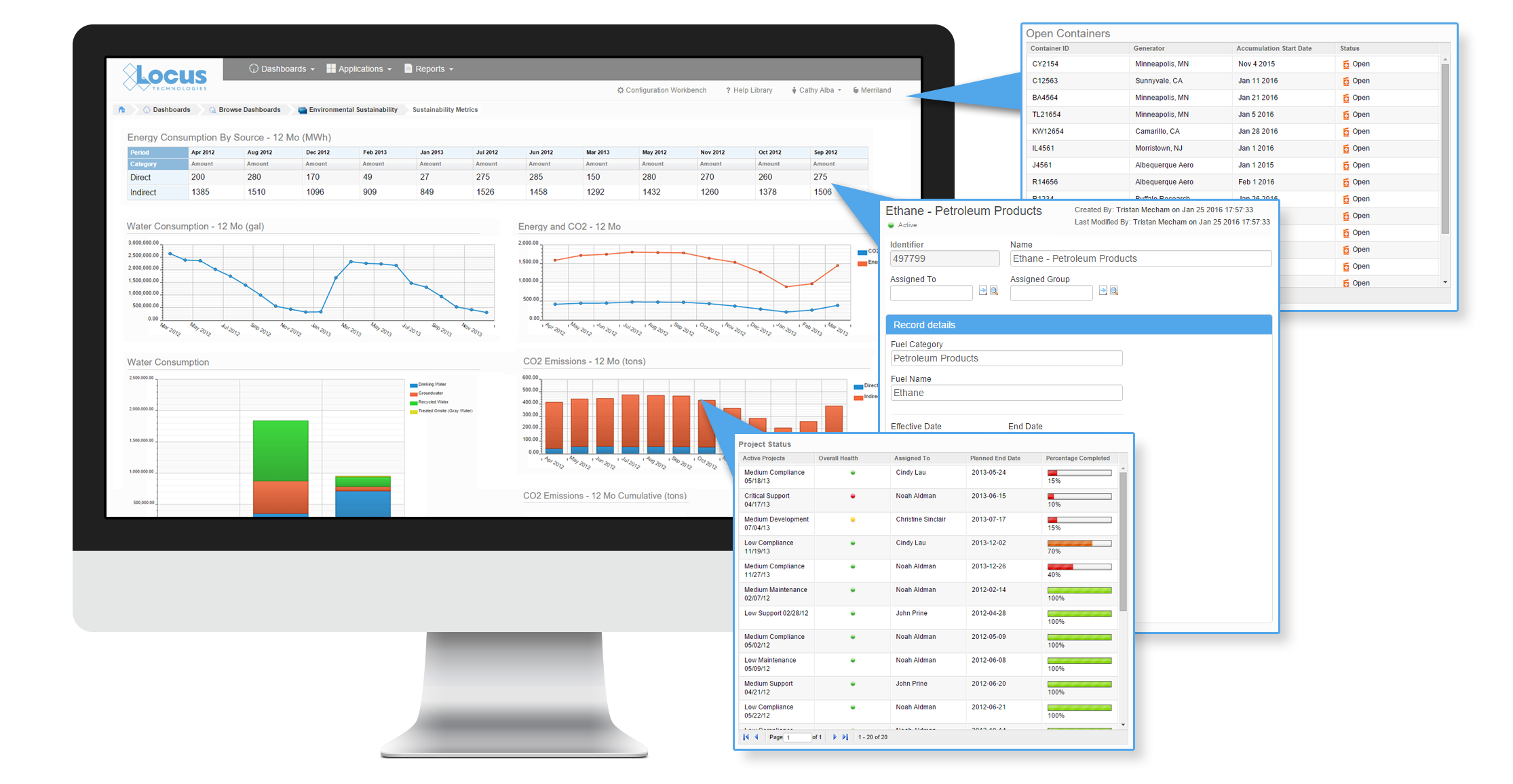
As I mentioned at the beginning of this blog, a new acronym, ESG, has recently shot to prominence. C-level executives are asking their EHS managers a question “Do we need more software to manage our ESG reporting? Smart companies should not rush and start searching Google for “ESG Software.” Instead, they should take a hard look at what they have on EHS compliance and sustainability management and augment it with ESG reporting. After all, everything that needs reporting or is worth reporting under the ESG acronym probably already exists and is hidden in their EHS compliance software, provided they selected the right one. Companies that have implemented integrated EHS compliance and sustainability management systems may already have most of the ESG data they need to report within their existing applications. If they do not, or if they have a “mutual fund” portfolio of EHS software already installed in unconnected silo applications, this is the time to clean house and switch to a unified reporting platform that integrates EHS and ESG into a single system of record and reporting. Companies that head down this path would not just be “killing two birds” but more: they would lower their costs, meet their new reporting needs, gain a better understanding of their environmental impacts, and potentially enhance their ESG reputation.
Locus Platform
Locus specifically built its configurable Locus Platform to unify many current and future applications on a single SaaS platform. The LP offers a wide range of features and functionality to power sustainability measurement, management, and reporting across the entire corporation. But it also provides a launching pad for EHS-related and unrelated apps that are interoperable and share relevant information, thus avoiding any double input. Among its features are the following:
- It offers Integrated IoT streaming of data from sensors, smart meters, mobile phones, or any physical device with an IP address.
- It is AI-ready and Blockchain-ready to help with data analyses.
- It offers built-in workflows and rules.
- It has robust business analytics tools and powerful reporting engines.
- It has a fully integrated GIS system.
- It has a pre-built library of entities and modules that allows users to quickly assemble all new applications without software developers’ help.
While EHS compliance applications are more comprehensive and dive deeper into the root causes of contamination and emissions, ESG reporting is much less complicated and requires fewer data to report and less scrutiny of such data. For example, federal and state standards such as Discharge Monitoring Reports (DMRs) require detailed water quality reporting, requiring companies to prove that their releases fall within allowable quantities (flow volume) and that chemicals in discharge samples do not exceed regulatory limits for the chemicals of concern. Consequently, the software to manage water quality for EHS reporting needs to provide automated tools to prove that: samples were collected correctly, sample holding time was not exceeded, the receiving laboratory tested samples using proper protocols, lab equipment, etc. Labs also must maintain calibration logs for equipment used in testing, testing details, and so forth.
None of these QC results and associated metadata are necessary for ESG reporting under voluntary reporting protocols such as the Carbon Disclosure Project (CDP), the Global Reporting Initiative (GRI), The Climate Registry (TCR), or GRESB, the leading ESG benchmark for real estate and infrastructure investments. Those protocols mainly require information to be assembled on volumes (quantities) of clean water used, water sources, and contaminated water discharge volumes. They may also include some identification of chemicals in releases but with no details and no testing protocols required. The GRI 303 standard on water and effluents, for example, requires companies to collect information on water use from withdrawal to consumption and discharge and to report on associated impacts on people and ecosystems, including at a local level. This standard enables investors to assess a company’s overall exposure to water risk, as it addresses the whole supply chain.
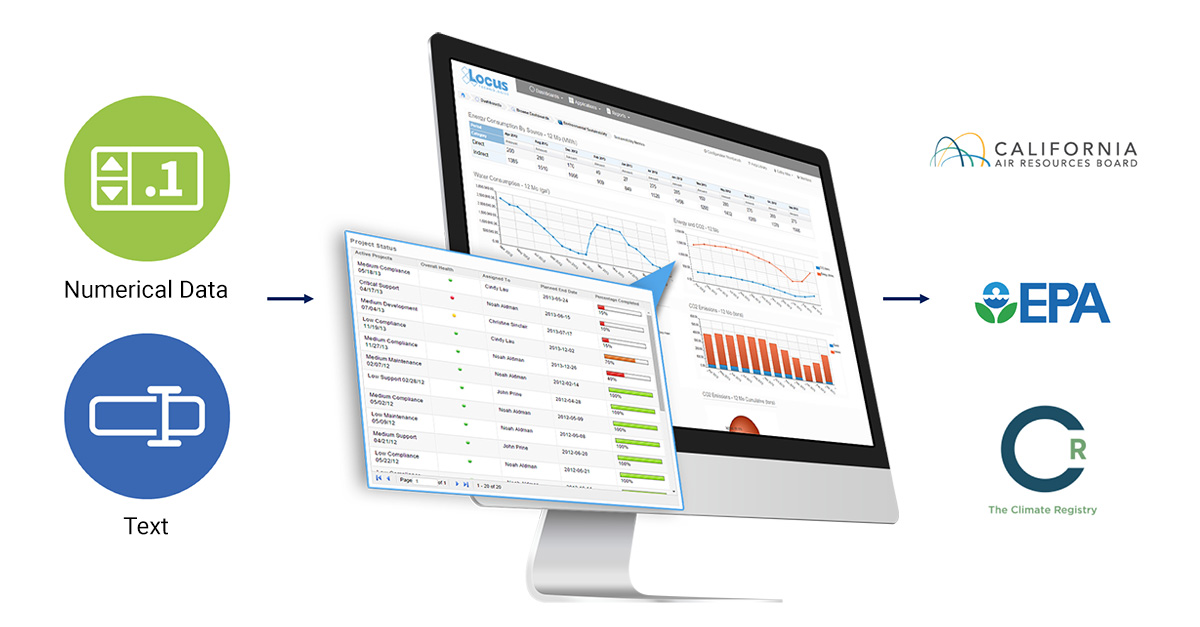
There are plenty of overlaps in this undertaking. Smart software like the Locus Platform can help avoid any double input between EHS compliance data and ESG reporting. For example, once inputted, facility information is instantly available to all apps, whether the final output of the app is for EHS or ESG reporting. If a spill incident is created and recorded in the EHS Incident App, another app for waste or groundwater contamination can track and manage that spill’s consequential emissions. Even a small spill could become costly if the spill creates long-lasting contamination of soil and groundwater below it. Reporting for spill under EHS compliance regulations is very different from reporting for ESG, yet the two can use the same database. Examples like this are numerous.
Locus continuously adds new features to its Locus Platform to expand EHS, Sustainability, and ESG interoperability and avoid and minimize data’s double input. Companies need a single system of record to house their sustainability data, EHS Compliance, and ultimately report ESG information across multiple reporting standards. Locus’ ESG SaaS delivers in this regard. Moreover, it can grow with customers’ needs thanks to its off-the-shelf configurability.
In short, the Locus Platform is an all-in-one sustainability management software tool that helps companies streamline data collection, improve data quality, benchmark performance, and communicate more effectively with internal and external stakeholders. Locus’s software automates collecting, reducing, and managing data to monitor and track critical metrics around EHS, CSR, and ESG performance. Once the data is in the Locus Platform, the software creates ESG, sustainability, and other reports adhering to multiple reporting standards to improve communications with stakeholders and show greater transparency.
Software Tools for Reporting to Multiple Regulatory or Voluntary Bodies
Many large companies must report to various regulatory or voluntary bodies. A company’s software of choice should support all the major reporting requirements to avoid double input or separate calculations for some jurisdictions. This is particularly true for GHG reporting.
When selecting its software system of record for EHS and ESG reporting, a company should strive to “enter once, report many times.” The gold standard is to have a system configured to report to multiple agencies from a single dataset. Before selecting software, companies should review their reporting requirements to see if their software handles them. Essential reporting requirements include state or federal regulations, internal CSR, and ESG based on whatever standard their organization adheres to, such as CDP, GRI, or more recent World Economic Forum (WEF) attempt to standardize many voluntary standards.
Companies also must consider export formats. For example, when selecting a GHG management software, the company must ensure their software of choice includes exports to XML, a standard format for Environmental Protection Agency (EPA) and California Air Resources Board (CARB) reporting, and an option for reporting to other agencies. Having such outputs easily generated from the software will save time and money during the reporting season. The XML report generation capability allows facilities to directly upload their GHG data instead of completing the complex web forms found in the EPA Electronic Greenhouse Gas Reporting Tool (e-GGRT) and CARB reporting worksheets (Cal e-GGRT).
Locus provides direct XML exports to the GHG application in its Locus Platform software. Locus is the only software vendor that is an approved GHG verifier by the California Air Resources Board (CARB) under AB 32, the California Global Warming Solutions Act of 2006. Since the program’s inception, Locus has performed more GHG verifications than any other company and learned much by observing GHG reporting practices at many companies. As a result, Locus has prioritized enhancing its GHG software to make it easier for customers to manage GHG emission inventory tracking and reporting requirements. Locus’ GHG application is fully integrated with compliance tracking, asset management, and IoT automation (including remote sensing). This ability to generate XML reports further streamlines customers’ report submission process to the EPA and CARB.
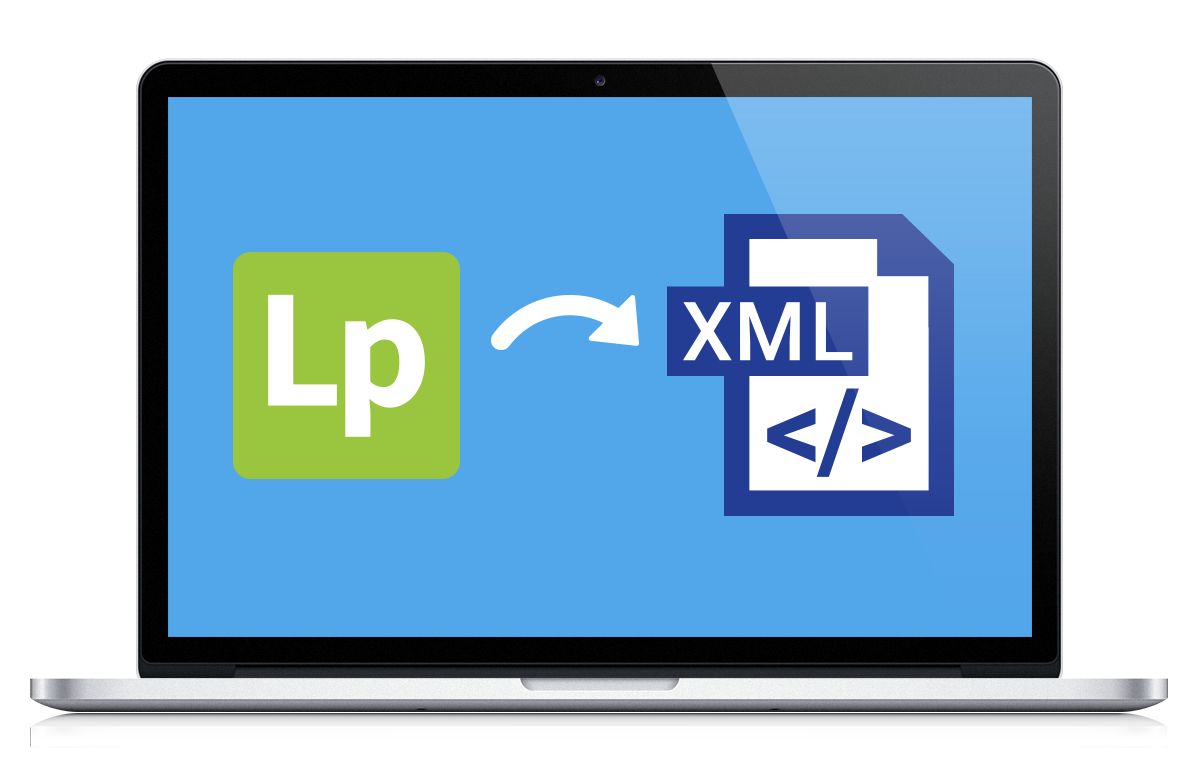
For example, data entry for EPA and CARB is consolidated in the GHG application, eliminating the need to maintain separate agency spreadsheets and software. This supports robust trend tracking and reporting, reducing data entry, reporting time, and error opportunities. For many greenhouse gas subparts, including Subparts C, D, W, and NN, the software automatically generates XML reports. These can be easily configured for any greenhouse gas industry segment.
From our experience, many of our customers have experienced frustration with the speed and difficulty of entering their data into the state and federal GHG reporting tools. The Locus Platform XML reporting tool lets customers bypass those clumsy interfaces completely. This saves time, helps companies avoid transcription errors, and ensures consistency with GHG data submitted to multiple reporting programs. As more and more regulatory and voluntary programs embrace automated report submittal through the XML format, Locus continues to expand this functionality to simplify reporting for our customers.
Conclusions
ESG reporting and EHS compliance are inherently cross-functional and coupled activities. Managing them together rather than separately is better. Locus built its platform on a highly secure, scalable, configurable, and efficient multi-tenant software platform. The traditional approaches to using a separate app or a spreadsheet for EHS compliance, sustainability management, or ESG reporting were ripe for digital transformation to a single platform of record. This is the main reason that we built the Locus Platform from scratch to take advantage of the latest cloud technologies and flexible and domain-driven reporting requirements.
Quality of data and standard protocols remain one of the biggest challenges to evaluating companies’ ESG performance. Such data are only credible if they come from the existing sources of EHS compliance data that are much more scrutinized and verified by regulators. Any potential conflict between two sets of the same data can spell disaster for the reporting entity. The perceived value of sustainable investments and practices is inevitably linked to data accuracy, consistency, and reproducibility.
The Locus Platform empowers companies to gain a holistic view of their sustainability performance by providing the means for them to assemble and report their EHS and ESG data from within a single system. Sustainability managers need comprehensive digital tools and real-time, AI-driven insights to keep up with the latest ESG disclosure requirements, trends, and stakeholder requests for information. Whether an organization is just getting started with sustainability initiatives or doing it for a while, Locus Technologies combined EHS and ESG software, explicitly tailored for multi-jurisdictional and multi-media reporting, can help companies make better and faster decisions and reduce the reporting cycle time. By quickly transforming corporate EHS compliance to ESG reporting, companies can improve their ESG score while lowering operational risks and costs. Locus software breaks down silos and provides a stable platform to work collaboratively with diverse teams of experts across the customer organization, its consultants, and its suppliers.

